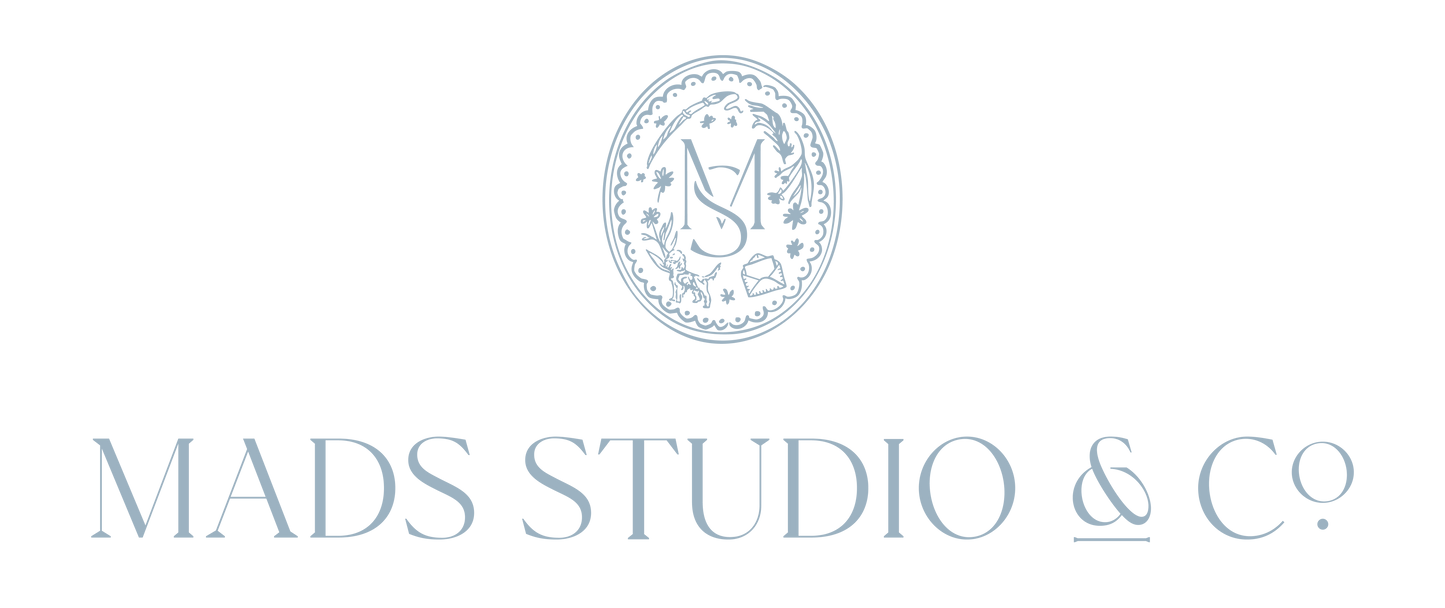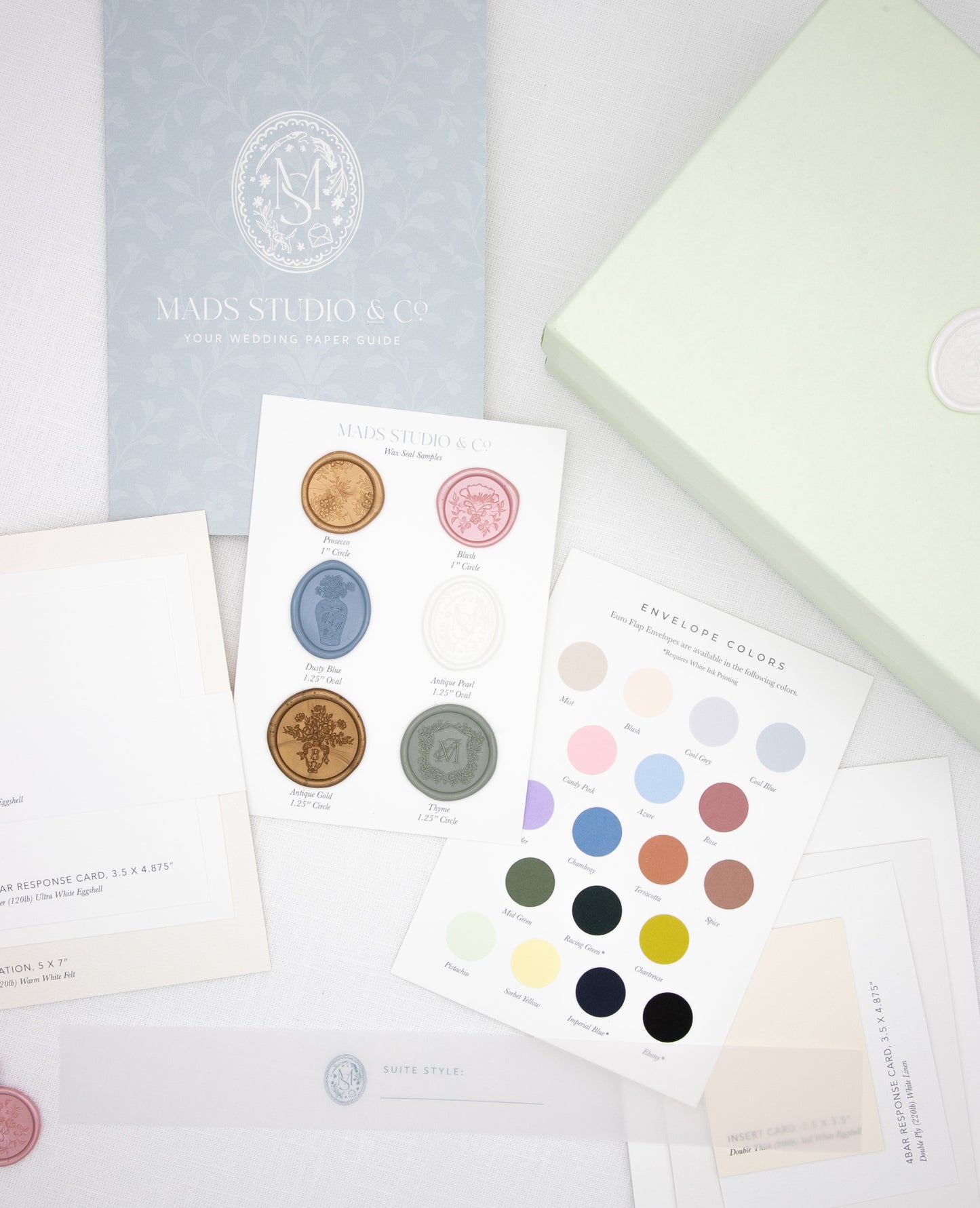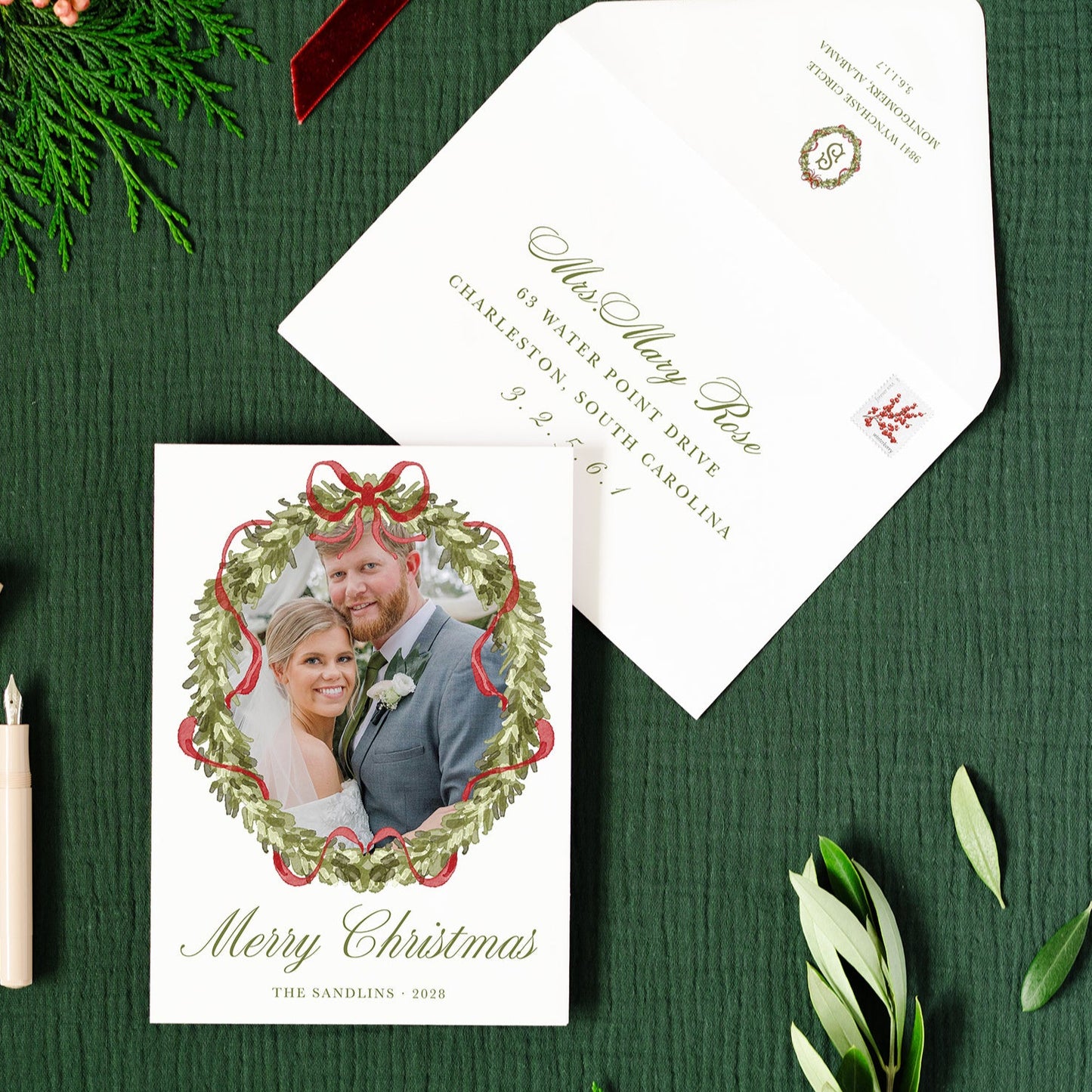
When it comes to creating your dream wedding invitations, the printing method plays a big role in both the look and feel of your stationery. Whether you’re envisioning a classic, timeless suite or something modern and minimalist, the right printing style can bring it all to life.
At Mads Studio & Co., we offer several luxurious printing methods—letterpress, digital (flat) printing, foil stamping, and embossing. Each one has its own charm, and I’m here to walk you through what they are and how they differ, so you can confidently choose the best fit for your big day.
1. Letterpress Printing

The feel: Soft, pillowy impressions you can feel when you run your fingers across the page.
The look: Elegant, timeless, and artisan-crafted.
Letterpress is one of the oldest printing methods and a favorite for weddings with a fine-art or classic aesthetic. Each design is pressed into the paper using a custom-made plate and a traditional printing press, creating deep impressions on thick, cotton paper. It’s a slower process, but the tactile result is truly stunning.
Best for: Minimalist designs, classic invitations, and high-end suites that highlight texture and craftsmanship.
Often Used for: Invitation Suite, some brides chose to do only the main invitation in letterpress with the details and RSVP cards in digital for a budget friendly option.
2. Digital (Flat) Printing
The feel: Smooth and modern.
The look: Crisp, colorful, and cost-effective.
Digital printing—also known as flat printing—is a popular option for couples who want full-color designs, custom illustrations, or watercolor artwork. The ink sits on the surface of the paper (no texture or impression), making it ideal for detailed imagery or when working with a tighter budget.
Best for: Designs with multiple colors, custom artwork, or quick turnarounds.
Often Used for: Day-Of Paper, Invitation Suites with full color custom artwork.

3. Foil Printing
The feel: Smooth, with eye-catching shine.
The look: Metallic and luxurious.
Foil stamping involves pressing metallic foil (usually gold, silver, rose gold, or copper) into the paper using heat and pressure. The result is shiny, reflective lettering or design elements that feel glamorous and refined. Foil can be used alone or combined with other methods like letterpress or digital printing for a layered, luxe effect.
Best for: Glamorous or formal weddings, metallic accents, or adding a touch of luxury.
4. Embossing
The feel: Raised texture, elegant to the touch.
The look: Subtle dimension and sophistication.
Embossing raises your design above the surface of the paper, creating a three-dimensional look without using ink or foil. It’s often used for monograms, crests, or accents that you want to highlight in a subtle, sophisticated way. Blind embossing (with no ink) is especially popular for understated elegance.
Best for: Monograms, logos, or couples who love clean, tonal design with a high-end.
Choosing the Right Printing Method for You
When selecting your printing method, consider:
Your aesthetic – Do you love the bold impression of letterpress or the shimmer of foil?
Your budget – Flat printing is the most economical, while foil and letterpress are more premium.
Your paper choice – Some methods require thicker stocks for the best results.
And of course, you don’t have to choose just one. Many of our couples mix methods—like combining foil accents with flat-printed text or using letterpress for the main invite and digital for inserts.
Ready to design your dream suite?
Let’s chat about your vision and build a custom wedding paper experience that’s uniquely yours.







